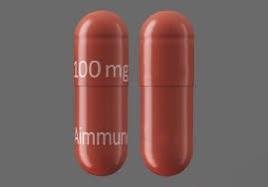Palforzia Side Effects
Generic name: peanut allergen powder
Medically reviewed by Drugs.com. Last updated on May 21, 2023.
Note: This document contains side effect information about peanut allergen powder. Some dosage forms listed on this page may not apply to the brand name Palforzia.
Applies to peanut allergen powder: oral capsule, oral powder.
Warning
Oral route (Capsule; Powder)
Peanut (Arachis hypogaea) Allergen Powder-dnfp can cause anaphylaxis, which may be life-threatening and can occur at any time during. Prescribe injectable epinephrine, instruct and train patients on its appropriate use, and instruct patients to seek immediate medical care upon its use. Do not administer Peanut (Arachis hypogaea) Allergen Powder-dnfp to patients with uncontrolled asthma. Dose modifications may be necessary following an anaphylactic reaction. Observe patients during and after administration of the Initial Dose Escalation and the first dose of each Up-Dosing level, for at least 60 minutes. Because of the risk of anaphylaxis, Peanut (Arachis hypogaea) Allergen Powder-dnfp is available only through a restricted program under a Risk Evaluation and Mitigation Strategy (REMS) called the Palforzia REMS.
Serious side effects of Palforzia
Along with its needed effects, peanut allergen powder (the active ingredient contained in Palforzia) may cause some unwanted effects. Although not all of these side effects may occur, if they do occur they may need medical attention.
Check with your doctor immediately if any of the following side effects occur while taking peanut allergen powder:
More common
- Chest tightness
- cough
- difficulty swallowing
- dizziness
- fast heartbeat
- hives, itching, skin rash
- nausea
- puffiness or swelling of the eyelids or around the eyes, face, lips, or tongue
- stomach pain
- throat irritation and tightness
- trouble breathing
- unusual tiredness or weakness
- vomiting
Other side effects of Palforzia
Some side effects of peanut allergen powder may occur that usually do not need medical attention. These side effects may go away during treatment as your body adjusts to the medicine. Also, your health care professional may be able to tell you about ways to prevent or reduce some of these side effects.
Check with your health care professional if any of the following side effects continue or are bothersome or if you have any questions about them:
More common
- Ear itching
- numbness or itching of the mouth
- runny nose
- sneezing
For Healthcare Professionals
Applies to peanut allergen powder: oral powder.
General
The most common adverse reactions included abdominal pain, vomiting, nausea, oral pruritus, oral paresthesia, throat irritation, cough, rhinorrhea, sneezing, throat tightness, wheezing, dyspnea, pruritus, urticaria, anaphylactic reaction, abdominal discomfort, upper abdominal pain, and ear pruritus.
The most common adverse reactions leading to discontinuation of treatment were abdominal pain, vomiting, nausea, and systemic allergic reaction, including anaphylaxis.[Ref]
Dermatologic
Very common (10% or more): Pruritus (up to 32.5%), urticaria (up to 28.4%)[Ref]
Gastrointestinal
Abdominal pain included upper abdominal pain and abdominal discomfort.
Oral pruritus included tongue pruritus and lip pruritus.[Ref]
Very common (10% or more): Abdominal pain (up to 67.1%), vomiting (up to 36.5%), nausea (up to 32.3%), oral paresthesia (up to 13.6%), oral pruritus (up to 31.2%)
Common (1% to 10%): Gastrointestinal reactions
Uncommon (0.1% to 1%): Eosinophilic esophagitis[Ref]
Hypersensitivity
Very common (10% or more): Anaphylactic reaction[Ref]
Other
Common (1% to 10%): Ear pruritus[Ref]
Respiratory
Very common (10% or more): Throat irritation (up to 40.3%), cough (up to 31.9%), rhinorrhea (up to 20.9%), sneezing (up to 20.2%), throat tightness (up to 14.1%), wheezing (up to 12.3%)
Common (1% to 10%): Dyspnea[Ref]
More about Palforzia (peanut allergen powder)
- Check interactions
- Compare alternatives
- Pricing & coupons
- Drug images
- Dosage information
- During pregnancy
- FDA approval history
- Drug class: allergenics
- En español
Patient resources
Professional resources
References
1. Product Information. Palforzia Level 1 (peanut allergen extract). Aimmune Therapeutics UK Ltd. 2022.
2. Product Information. Palforzia (peanut allergen extract). Aimmune Therapeutics. 2023.
Further information
Always consult your healthcare provider to ensure the information displayed on this page applies to your personal circumstances.
Some side effects may not be reported. You may report them to the FDA.

